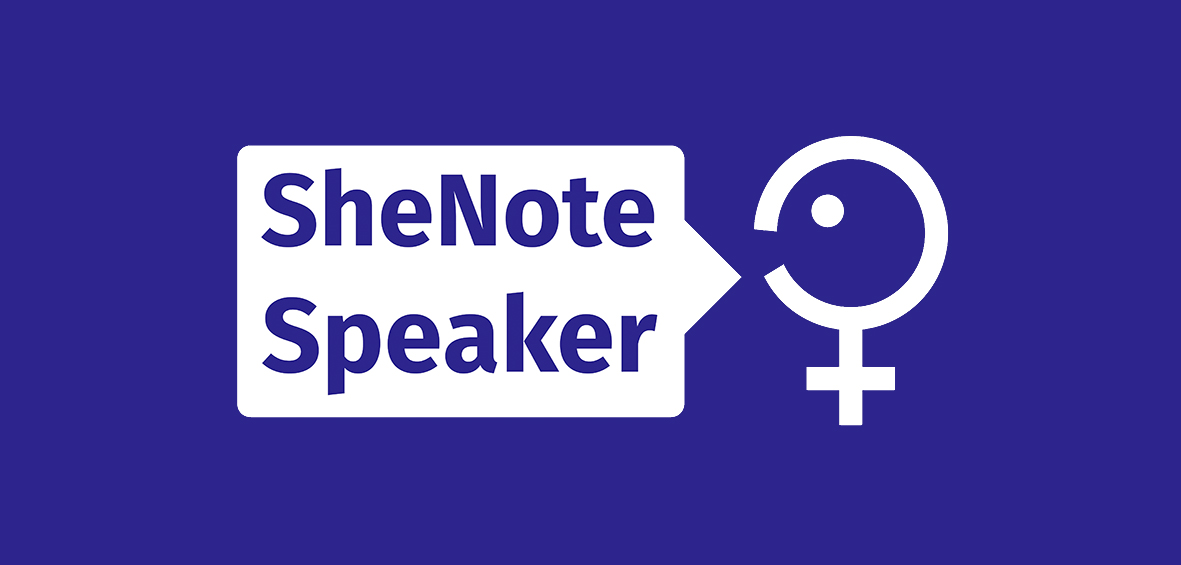
This International Women’s Day, Dr Mike Cox On is launching SheNote Speaker to help address the gender imbalance in science.
Dr Elisabeth Bik is a microbiome researcher and science editor who runs Microbiome Digest, a blog that’s updated daily and highlights microbiome literature worth reading. In 2016 she asked scientists in the field to nominate their favourite women microbiome researchers in order to improve the visibility of women in the field. This developed to become an actively updated database of experts that’s easily searchable by research interest in microbiome science – Women In Microbiome Research. Dr Bik explains the motivation for establishing the list clearly on her site, but one of the major driving forces was the lack of women as keynote speakers, panel members or chairs at conferences.
Women scientists face enormous biases. There are quantitative biases against women in letters of recommendation for postdoctoral fellowships1, in the selection of candidates for research positions2, in peer review3, in grant review scores4, in citations of publications with female principal investigators5. A common response when conference organisers are challenged to justify their all-male conferences, is that they were unable to find female speakers in the particular discipline, or that those they did invite turned them down. There is even a bingo card for the best excuses.
Self-nominated lists of experts such as Dr Bik’s provide a pool of female experts and leaders within a field that can be consulted to identify keynote speakers. It negates this excuse. Currently at over 500 members and simple to search for different areas of expertise, the list has value even beyond conference organising. As a (lazy) journal editor I use it to find reviewers for microbiome papers, hopefully also addressing some of the gender biases in peer review; search committees can use it to expand their search pool, colleagues can identify collaborators. It also facilitates further methods of addressing the gender balance as research indicates an excellent way to increase representation of women at conferences is for a woman to convene the conference6.Many other fields have also used this approach, from Evolution to Genomics, Fruit Growing and Physics. These are collated here.
Inspired by these efforts and to celebrate International Women’s Day, we are launching SheNote Speaker – our own lists of respiratory, cardiac and vascular researchers, aiming to create a community resource in each discipline that can be used directly to address bias, which is often particularly prominent in clinical research. We will be promoting this amongst researchers and research organisations in order to populate the list with women researchers, professors and staff scientists in each field and go some way to redressing the imbalance.
Dr Michael Cox is a Microbial Ecologist in the Genomic Medicine Section of the National Heart and Lung Institute.

- Dutt, K., Pfaff, D. L., Bernstein, A. F., Dillard, J. S. & Block, C. J. Gender differences in recommendation letters for postdoctoral fellowships in geoscience. Nature Geoscience 9, 805–808 (2016).
- Moss-Racusin, C. A., Dovidio, J. F., Brescoll, V. L., Graham, M. J. & Handelsman, J. Science faculty’s subtle gender biases favor male students. Proc. Natl. Acad. Sci. U.S.A. 109, 16474–16479 (2012).
- Helmer, M., Schottdorf, M., Neef, A. & Battaglia, D. Research: Gender bias in scholarly peer review. eLife 6, e21718 (2017).
- Kaatz, A. et al. Analysis of National Institutes of Health R01 Application Critiques, Impact, and Criteria Scores: Does the Sex of the Principal Investigator Make a Difference? Acad Med 91, 1080–1088 (2016).
- Caplar, N., Tacchella, S. & Birrer, S. Quantitative evaluation of gender bias in astronomical publications from citation counts. Nature Astronomy 2017 1:6 1, s41550–017–0141 (2017).
- Casadevall, A. & Handelsman, J. The Presence of Female Conveners Correlates with a Higher Proportion of Female Speakers at Scientific Symposia. mBio 5, e00846–13–e00846–13 (2014).
As a Mother, I would also urge to consider always any available oportunity to reach “younger girls, as early as primary school” to inspire them and show the Science world available to them.